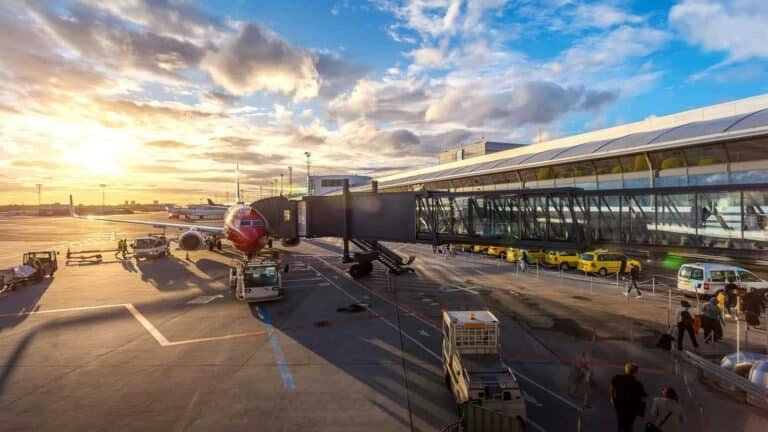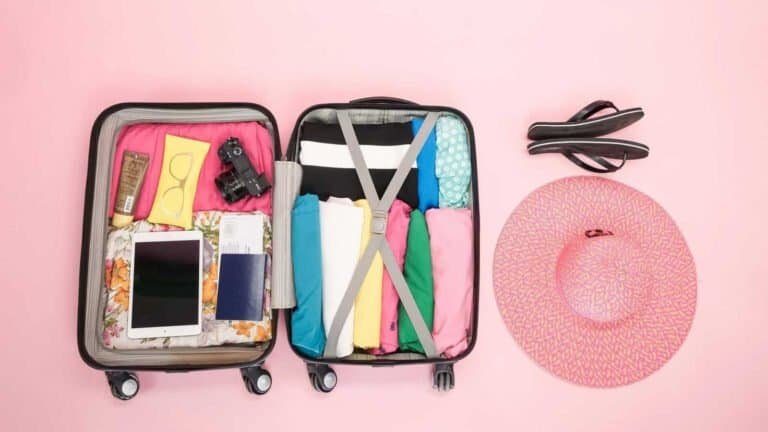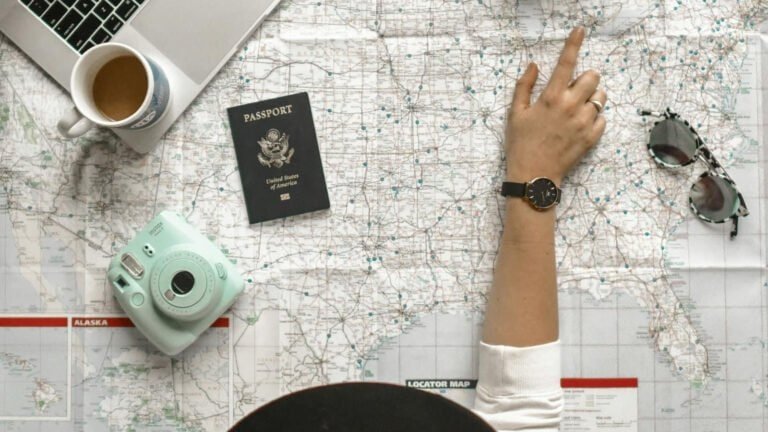Ultimate International Travel Documents Checklist: Everything You Need Before You Go (2025 Updated Guide)

Did you know that over 30,000 travelers are denied entry to foreign countries every year simply because of improper documentation? I learned this the hard way when I was nearly turned away at the Thai border because my passport had less than six months of validity remaining. Talk about a heart-stopping moment!
International travel is exciting, but there’s nothing that can ruin your trip faster than missing paperwork. I’ve been traveling internationally for over 15 years, and I’ve seen fellow travelers in tears at immigration counters, frantically searching through bags for documents they forgot or didn’t know they needed.
Travel documentation requirements have evolved dramatically in recent years. Remember when a simple passport was all you needed? Those days are long gone! From digital health records to QR-coded visas, the documentation landscape keeps changing. After the global pandemic, even more requirements were added, some of which have stuck around into 2025.
This comprehensive guide covers absolutely everything you need to know about travel documentation – from the obvious essentials to the obscure papers that could save your trip in specific situations. I’ve organized it as a timeline-based checklist so you’ll know exactly what to prepare and when. Let’s make sure you’re never caught unprepared at an immigration counter again!
Essential Identification Documents for International Travel
Your primary identification documents are the absolute non-negotiables of international travel. I keep these in a separate waterproof pouch that’s always with me – I’m paranoid that way, but it’s saved me more than once!
First and foremost: your passport! This seems obvious, but you wouldn’t believe how many people I’ve met who frantically realized their passport was sitting in a drawer at home while they were already at the airport. Check your passport’s expiration date right now. Seriously, go look. I’ll wait.
Here’s something many travelers miss: most countries require your passport to be valid for at least six months BEYOND your planned return date. I nearly got caught by this in Malaysia years ago. The immigration officer gave me a stern look and said, “You’re cutting it very close.” My passport expired just six months and two weeks after my entry date. Phew!
Visa documentation requirements vary wildly by destination and your citizenship. I’m always shocked at how many people show up at borders without researching visa requirements. Some countries still offer visas on arrival, while others require applications months in advance. For example, my trip to India required applying online, paying a fee, and printing a confirmation before departure. Double-check your specific requirements at your destination country’s official immigration website – not third-party sites that might have outdated info.
Planning to drive? You might need an International Driving Permit (IDP). I learned this one the hard way in Greece. The rental car company wouldn’t release the vehicle without one, and I had to waste a day of my vacation figuring out alternative transportation. Many countries don’t recognize your home driver’s license without this accompanying document. IDPs are typically easy to get – in the US, you can obtain one through AAA for about $20. Just bring your valid driver’s license, two passport photos, and the application fee.
If you’re a frequent traveler, expedited screening programs are worth their weight in gold. I enrolled in Global Entry five years ago, and it’s saved me countless hours at US immigration. The documentation requirements include your Global Entry card or program number, which you’ll want to have accessible for both your departure and return trips. Similar programs exist worldwide – Nexus for Canada, e-Gates for the EU, and SmartGate for Australia and New Zealand. Remember, you need to bring the appropriate membership cards or confirmation numbers.
National ID cards can be useful supplementary identification, but rarely replace passport requirements. I always bring mine as a backup. Similarly, birth certificates aren’t typically required for adults but can be crucial for traveling with minors or establishing citizenship in emergency situations. I keep a digital copy of mine stored securely in the cloud.
Travel Authorization and Entry Requirement Documents
Beyond the basics, many countries have implemented electronic travel authorizations that aren’t quite visas but are still required. I’ve noticed this trend growing steadily over the past few years.
Electronic Travel Authorizations (ETAs) are now required by numerous countries that previously allowed visa-free entry with just a passport. Canada has the eTA, the EU has ETIAS (which fully implemented in late 2024), Australia has their own ETA system, and the list keeps growing. These usually involve online applications before travel, and while they’re typically straightforward, forgetting one means you likely won’t even be allowed to board your flight. I keep all ETA confirmation emails in a special email folder AND printed out in my travel document pouch.
Even if you’ve applied for a visa or ETA online, you often need to print confirmation documents. Last year, my friend was denied boarding on a flight to Kenya because she had completed the online visa process but didn’t have the printed confirmation with QR code. Don’t make this mistake – always have physical copies even when the system is supposedly electronic.
Many countries require proof of onward travel – documentation showing you plan to leave the country, typically within the timeframe of your allowed stay. This caught me off guard in Costa Rica years ago. The airline wouldn’t let me board until I purchased a refundable ticket out of the country that I could cancel later. If you’re traveling one-way or have flexible plans, be prepared with a printout of future travel bookings, even if they’re tentative or refundable.
Some immigration forms can be completed in advance online, saving you time at borders. Mexico, for example, allows you to fill out and print your tourist card before arrival. I always check the destination country’s immigration website about two weeks before travel to see what can be completed ahead of time.
Despite vaccines becoming less of a talking point, some COVID-era travel documentation still remains relevant in 2025. Several countries maintain vaccination verification systems or testing requirements for certain regions. I was surprised when visiting parts of Southeast Asia last month that I still needed to show my vaccination record at certain checkpoints. It’s always worth verifying current health documentation requirements, as these can change with little notice.
Special regions within countries sometimes have their own border crossing requirements. When I visited Hong Kong from mainland China, I needed to complete additional documentation despite both technically being part of the same country. The same applies for travel between many Caribbean islands, even on a cruise. Don’t assume one visa or entry permit covers an entire region!
Financial and Insurance Documentation Essentials
The financial aspects of travel documentation are often overlooked until you’re stuck somewhere without access to funds – a nightmare scenario I’ve unfortunately experienced.
Your travel insurance policy documentation is absolutely essential. In Switzerland two winters ago, I took a nasty fall while skiing and ended up in the hospital. When they asked for insurance information, I was relieved to have my policy number and emergency contact details immediately available in my travel document app. Always carry both digital and physical copies of your insurance card, policy number, and the 24/7 emergency assistance phone number.
Before any international trip, I notify my bank and credit card companies about my travel dates and destinations. The confirmation emails from these travel notifications are worth keeping. There’s nothing worse than having your card declined for “suspicious activity” when you’re just trying to pay for dinner in a foreign country! I also bring at least one backup credit card from a different bank – a lesson I learned when my primary bank froze my card despite my travel notification.
I also keep digital copies of my recent bank statements showing sufficient funds. Some countries can request proof that you can support yourself financially during your stay. Thailand, for example, technically requires tourists to show 10,000 baht (about $300) per person or 20,000 baht ($600) per family, though this is randomly enforced. I was asked to prove I had sufficient funds when entering the Philippines on a longer stay.
An emergency contact card is something I create for every trip. This small laminated card includes embassy information, local emergency numbers, my hotel details, and contact information for family members. I keep one copy in my wallet and another in my luggage. It’s saved me more than once, like when my phone died in a remote part of Portugal and I needed to call my hotel for directions.
Health and Medical Documentation for Travel Safety
Medical documentation can literally be a lifesaver when traveling internationally. As someone with a mild shellfish allergy, I’ve learned to be thorough with my health documentation.
Vaccination records have become more standardized globally. The International Certificate of Vaccination, often called the “Yellow Card,” is recognized worldwide and documents all your vaccinations. Some countries still require specific vaccinations for entry – yellow fever vaccination proof is still mandatory for entry to several African and South American countries. I learned this when flying from Kenya to Tanzania and nearly wasn’t allowed to board because my yellow fever certification wasn’t initially in my carry-on documents.
If you take prescription medications, proper documentation is crucial. I always travel with:
- Original labeled prescription bottles (even if I transfer most pills to a daily organizer)
- A doctor’s letter listing my medications, their generic names, and confirming they’re for personal use
- Digital copies of prescriptions in case I need emergency refills
This documentation saved me in Japan when customs questioned my allergy medications. Without the doctor’s letter, they might have been confiscated.
A condensed medical history summary is something most travelers don’t think about, but it’s invaluable in emergencies. Mine is a one-page document that lists:
- Blood type
- Allergies
- Current medications
- Previous major surgeries
- Emergency contacts
- Insurance details
- Primary doctor’s contact information
I had a friend who experienced a serious medical emergency in Thailand, and the doctors immediately needed to know about his previous heart condition. Having this information readily available can significantly improve your care in emergency situations.
Medical alert information in multiple languages is particularly important if you have severe allergies or conditions that emergency responders should know about immediately. I had my shellfish allergy translated into five languages before a multi-country trip through Southeast Asia, where seafood is ubiquitous.
Health-related legal documents like advance directives or medical powers of attorney aren’t pleasant to think about, but they can be crucial for serious emergencies. I keep digital copies of these with trusted emergency contacts who can send them if needed.
Digital Document Organization and Backup Systems
In today’s world, digital organization of travel documents is just as important as physical organization. After having my daypack stolen in Barcelona years ago (with most of my travel documents), I’ve developed a comprehensive digital backup system.
Cloud storage has been a game-changer for travel document management. I use a secure cloud storage service with encrypted folders containing scans of all my essential documents. The key is making sure these files are available offline too – I download local copies to my phone before each trip. Services like Google Drive, Dropbox, or specialized travel apps like TripIt or Travel Vault can work well, but make sure whatever you use has good security practices.
Password managers are essential for securely accessing your digital documents. I use one that stores not only my passwords but also secure notes with passport numbers, insurance policy details, and banking information. The master password is something I memorize – never written down.
I also email copies of key documents to myself with subject lines that are easy to search in case I need to access them from a new device. The email subject format I use is: “TRAVEL DOCS – [Country] – [Year]” which makes them instantly searchable even years later.
Document scanning apps have improved dramatically in recent years. Before each trip, I use an app to scan all new documents at high resolution. These apps can enhance readability and create PDFs that are easier to use than simple photos. My favorite scanning app also automatically organizes documents by category and date.
Digital folder organization might sound boring, but it’s made a huge difference in my travel preparation. My system includes:
- Main folder: Trip name and dates
- Subfolders: Identification, Transportation, Accommodation, Activities, Insurance, Maps & Itineraries
Everything gets filed appropriately, with the most crucial documents also starred or tagged for emergency access.
For physical documents, I use a multi-compartment travel wallet with specific sections for:
- Passport and IDs
- Currency and cards
- Transportation tickets
- Accommodation details
- Tour and activity confirmations
The physical organization mirrors my digital system, making it easy to find anything quickly.
Special Situation Travel Documents
Some travel situations require specialized documentation that you might not need for typical trips. Over my years of traveling, I’ve encountered several of these special cases.
Child travel consent forms are absolutely essential when traveling with minors, especially if both legal parents aren’t present. My sister learned this the hard way when trying to take my nephew to Mexico without my brother-in-law. She was stopped at the border and almost wasn’t allowed to proceed. Many countries require a notarized letter of consent from the absent parent, the child’s birth certificate, and sometimes even custody documents. These requirements have become stricter over the years as authorities work to prevent child trafficking.
Pet travel has become increasingly common but comes with substantial documentation requirements. When I moved abroad with my cat, I needed:
- Veterinary health certificate (issued within 10 days of travel)
- Vaccination records, particularly rabies
- Microchip documentation
- Import permits for the destination country
- Special airline forms
Some countries have quarantine requirements or specific testing that must be done within tight timeframes before travel. Research these requirements months in advance, as some procedures need to be started well before your trip.
Business travelers need additional documentation beyond tourist requirements. I’ve needed to present business visas, letters from employers, meeting invitations, and sometimes even proof of company registration when traveling for work. Work permits are a whole other category with even more extensive requirements.
Students studying abroad face some of the most complex documentation requirements. When I was an exchange student years ago, I needed acceptance letters, proof of financial support, housing arrangements, and special visa documentation. Many of these documents had to be officially translated and notarized.
Traveling with specialized equipment like professional cameras, drones, or valuable instruments often requires customs documentation. ATA Carnets, sometimes called “passports for goods,” allow you to temporarily import professional equipment without paying duties and taxes. I’ve used these when traveling with expensive photography gear to avoid both customs charges and questions about whether I was planning to sell the equipment.
If you’re attending or planning a destination wedding, bring copies of any event-specific documentation. My cousin almost had issues bringing her wedding dress into Italy until she could provide confirmation from the wedding venue and her marriage certificate appointment.
Pre-Departure Document Checklist and Timeline
After many years of international travel, I’ve developed a timeline-based checklist that ensures I’m never scrambling for documents at the last minute.
3-6 months before departure is when I start the documentation process:
- Check passport validity and renew if it expires within 8 months of return date
- Research visa requirements and begin applications for destinations with lengthy processes
- Verify if vaccinations are needed and schedule appointments
- Apply for special permits (International Driving Permit, etc.)
- Begin gathering supporting documentation for complex visas
One month before departure:
- Confirm all visa applications are approved or in process
- Verify that applied-for documents have arrived
- Check travel advisories for documentation requirement changes
- Make copies of all essential documents (physical and digital)
- Confirm travel insurance coverage and print policy details
- Notify banks and credit card companies of travel plans
One week before departure:
- Organize physical documents in a travel wallet or document organizer
- Download offline copies of digital documents
- Verify online check-in capabilities and requirements
- Confirm transportation documentation is complete
- Print boarding passes if available
- Verify emergency contact information is updated
The day before departure:
- Conduct a final document check using a printed checklist
- Place documents in your carry-on in an organized manner
- Ensure digital backups are accessible
- Verify you have multiple copies separated in different locations
- Check for any last-minute travel advisory changes
I’ve developed a special system for carrying documents safely while traveling. The most essential items (passport, one credit card, some cash) stay in a slim, RFID-blocking neck wallet under my clothes. Other important but less crucial documents are in a separate travel wallet in my carry-on bag. Additional copies are distributed between my luggage. This system has protected me from total document loss even when I’ve had items stolen.
What to Do If You Lose Critical Travel Documents Abroad
Despite our best preparations, document emergencies happen. I’ve been through this personally, and knowing what to do can turn a trip-ruining disaster into a manageable inconvenience.
Know your embassy or consulate contact information before you travel. Store this information both digitally and on paper, separate from your main documents. When my wallet was stolen in Madrid, the first thing I did was contact the US embassy. They provided clear guidance on replacing my passport and offered resources for contacting my bank.
File a police report immediately if documents are lost or stolen. Many travel insurance claims require this documentation, and it’s also necessary for replacing certain documents. In Barcelona, I had to visit the local police station to file a report about my stolen backpack before the embassy would process my temporary passport.
Accessing digital backup copies becomes crucial in these situations. This is when your cloud storage preparation really pays off. I was able to visit an internet café, access my encrypted cloud storage, and print copies of my essential documents to help verify my identity at the embassy.
The emergency passport replacement process varies by country, but usually requires:
- Proof of identity (any remaining ID or copies of your passport)
- Police report for stolen documents
- Passport photos (find a local photo shop)
- Completed application forms (available at the embassy)
- Payment for replacement fees
In my case, I received a limited-validity emergency passport within 24 hours that allowed me to continue my trip and return home. The full replacement process happened after I returned.
Insurance claims for lost documents should be filed as soon as possible. Most travel insurance policies cover the costs of emergency document replacement, including transportation to and from embassies and expedited processing fees. Keep all receipts related to the replacement process.
When all else fails, identity verification alternatives might be necessary. Embassy officials can sometimes contact your home country to verify your identity through database records. In extreme cases, having a friend or family member email copies of your birth certificate or other identity documents can help establish who you are.
Conclusion
Proper travel documentation is the foundation of stress-free international travel. I’ve learned through many trips (and a few mishaps) that thorough preparation prevents most problems. The peace of mind that comes from knowing you have all your essential documents organized and backed up is truly invaluable.
This comprehensive checklist covers documents for typical vacations as well as special situations. From essential identification to specialized permits, being prepared means you’ll spend your trip enjoying new experiences rather than dealing with bureaucratic nightmares.
Remember that documentation requirements continue to evolve, particularly in our post-pandemic world. Always check the most current requirements for your specific destinations and circumstances shortly before travel.
I find that the combination of thoughtful physical organization and secure digital backups provides the best protection against document-related travel problems. My multi-layered system has saved me more than once, and I continue to refine it with each international journey.
I’d love to hear your travel document stories or tips! Have you had a documentation emergency abroad? How did you handle it? Or do you have a clever organization system to share? Leave a comment below, and let’s help each other travel more smoothly!
Safe travels and happy documenting!



